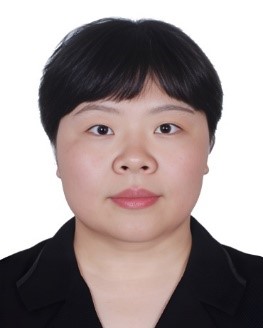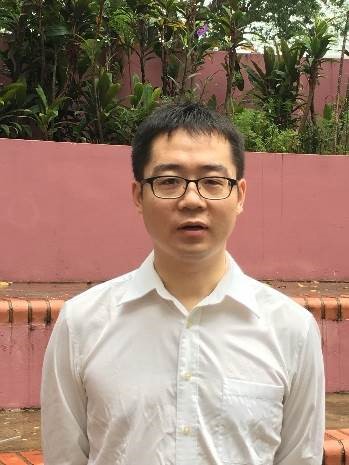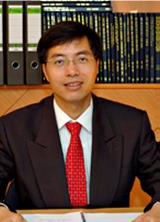Seminar
The Seaward Expansion Pattern of Mangroves in High Siltation Estuaries of China in the 21st Century |
| 22 March 2024, Friday, 1:30pm - 2:30pm | Speaker: Professor Li Ruili, Peking University Shenzhen Graduate Institute |
| Venue: Seminar Room 8D-1, Level 8, Temasek Laboratories | Event Organiser Host: Assoc Professor Teo Chiang Juay |
ABSTRACT |
Mangrove wetlands are key ecologically sensitive areas in the land-sea interface, and most of the mangroves in China are in a state of rapid surface elevation uplift, resulting in mangrove communities in their natural state tend to expand seaward. But because the dynamic characteristics of species structure and stand patterns during seaward expansion are difficult to obtain accurately, natural seaward expansion pattern of mangroves has not been fully studied. Here, the largest mangrove in China was used as the research object. An algorithm was constructed to automatically identify the main plant species and determine the canopy size of each plant with the help of UAV remote sensing and deep learning models, and to automatically obtain the spatial structure parameters of stands. The results show that Aegiceras corniculatum is the "first" pioneer species, the degree of competition increases and then decreases, and the overall distribution of mangrove plant communities changed from uniform to random during the seaward expansion of mangrove. The pattern of seaward expansion of mangroves is characterized by zonal displacement and local community succession. In the initial stage of mangrove seaward expansion, the habitat is extremely harsh with significant tidal, and Aegiceras corniculatum becomes the pioneer species; after Aegiceras corniculatum is colonised, the habitat conditions are improved, creating conditions for the colonization of Avicennia marina. The mangrove community at the 1 ~ 7 years of stand age is mainly composed of Avicennia marina and Aegiceras corniculatum, and the stand starts to close, with fierce competition between the Avicennia marina and Aegiceras corniculatum species for space and sunlight, etc. The mangrove community at the 7 years of stand age or more is dominated by a single Avicennia marina species, and Aegiceras corniculatum is gradually eliminated due to shorter height and other factors, eventually a uniform, dense Avicennia marina stand forms. |
| ABOUT THE SPEAKER |
 Li Ruili, a Professor and executive director of the Mangrove Engineering Technology Research Center of Guangdong Province; Vice Director of the Chinese Mangrove Ecology Professional Committee; Vice Director of the Chinese Energy Society Special Committee. Jointly trained as a Ph.D. candidate by Nankai University and the University of Tokyo (2008-2009), a high-level overseas talent in Shenzhen, mainly engaged in research on mangrove ecology conservation and restoration, as well as smart water ecology in the Greater Bay Area. She has led a total of 28 projects, including national key research and development programs, National Natural Science Foundation projects, Guangdong Province marine science and technology key projects, Shenzhen disciplinary layout projects, technical projects, sustainable special projects, as well as industry-university-research cooperation projects. She has published 104 papers and obtained 18 authorized invention patents. She has won awards such as the 2023 National Environmental Protection Science and Technology Second Prize (1st place), the 2022 Guangdong Science and Technology Award-Technology Promotion Award (1st place), and the 2022 Guangdong Environmental Protection Science and Technology Second Prize (1st place). Research directions: (1) Global change and urban mangroves (2) Precision monitoring and restoration of mangroves (3) Digital mangrove ecological technology (4) Smart water ecology in the Greater Bay Area. |

Customized Drones Array for Ocean Science Application |
| 22 March 2024, Friday, 2:30pm - 3:30pm | Speaker: Dr. Wang Hao, Department of Mechanical and Aerospace Engineering at Southern University of Science and Technology (SUSTech) |
| Venue: Seminar Room 8D-1, Level 8, Temasek Laboratories | Event Organiser Host: Assoc Professor Teo Chiang Juay |
ABSTRACT |
The demand for Vertical Takeoff and Landing (VTOL) unmanned aerial vehicles (UAVs) has seen a significant surge in recent years and is expected to continue growing in the coming decades. In this presentation, I will introduce the research and development conducted on VTOL UAVs at the Smart Drone Laboratory (SDL) in the Southern University of Science and Technology (SUSTech). The focus will be on the customized drone array system for Ocean science application, including the overall design, the onboard system, the array control algorithm, the flight test, and practical applications. The Smart Drone Laboratory at SUSTech has been at the forefront of developing innovative solutions for UAV technology, particularly in the field of Ocean science. The research and development efforts have led to advancements in drone array systems that can be tailored to specific applications, providing researchers with a versatile tool for data collection and analysis in marine environments. The presentation will also touch upon prospects for VTOL UAVs in Ocean science research and potential collaborations with industry partners to further enhance the capabilities of these cutting-edge technologies. |
| ABOUT THE SPEAKER |
 Dr. Wang is currently a Research Assistant Professor at the Department of Mechanical and Aerospace Engineering at Southern University of Science and Technology (SUSTech). He obtained his Ph.D. in Mechanical Engineering (Fluid Mechanics) from the National University of Singapore (NUS) in 2016 and his B.Eng. in Aerospace Engineering from Nanyang Technological University (NTU) in 2010. Prior to joining SUSTech, Dr. Wang held a Senior Engineer position at a commercial WIG-craft company. He has made significant contributions to the field. Dr. Wang has been granted more than 30 patents and received recognition for his work, winning the first prize for scientific and technological progress in Guangdong Province in 2019. His research focuses on various areas, including overall configuration design of drones/UAVs, flight stability and control, as well as precise flight test data acquisition. |

Overview of Electromagnetic Selective Structures |
| 22 March 2024, Friday, 3:30pm - 4:30pm | Speaker: Professor Zhongxiang Shen, Beijing Institute of Technology, China |
| Venue: Seminar Room 8D-1, Level 8, Temasek Laboratories | Event Organiser Host: Dr. Liu Ziliang |
ABSTRACT |
In this talk, we intend to provide a brief overview of electromagnetic selective surfaces/structures (EMSS). According to the properties of an incident electromagnetic wave, EMSS can be divided into four categories: frequency-selective structure (FSS), polarization-selective surface (PSS), angle-selective surface (ASS), and energy-selective surface (ESS). Recent developments and advances in the design of EMSS will also be briefly introduced. Finally, future opportunities in the areas of the design and analysis of EMSS will be suggested. |
| ABOUT THE SPEAKER |
 Zhongxiang Shen received the B. Eng. degree from the University of Electronic Science and Technology of China, Chengdu, China, in 1987, the M. S. degree from Southeast University, Nanjing, China, in 1990, and the PhD degree from the University of Waterloo, Waterloo, Ontario, Canada, in 1997, all in electrical engineering. From 1990 to 1994, he was with Nanjing University of Aeronautics and Astronautics, China. He was with Com Dev Ltd., Cambridge, Canada, as an Advanced Member of Technical Staff in 1997. He spent six months each in 1998, first with the Gordon McKay Laboratory, Harvard University, Cambridge, MA, and then with the Radiation Laboratory, the University of Michigan, Ann Arbor, MI, as a Postdoctoral Fellow. From Jan. 1999 to December 2023, he was a faculty member (Assistant Professor, Associate Professor and Full Professor) of Nanyang Technological University, Singapore. He is now a Strategic Scientist at Yangtze Delta Region Academy of Beijing Institute of Technology, Jiaxing, Zhejiang, China. Dr. Shen served as the Chair of the IEEE MTT/AP Singapore Chapter in 2009. From Jan. 2010 to Aug. 2014, he was the Chair of IEEE AP-S Chapter Activities Committee. From July 2014 to December 2018, he served as the Secretary of IEEE AP-S. He was an elected AdCom member of the IEEE AP-S from Jan. 2017 to Dec. 2019. He served as an Associate Editor of the IEEE Transactions on Antennas and Propagation from July 2016 to July 2022. From Jan. 2021 to Dec. 2023, he is a Distinguished Lecturer of the IEEE AP-S. Prof. Shen is currently the Editor-in-Chief of IEEE Open Journal of Antennas and Propagation. Prof. Shen is an IEEE Fellow. His research interests include small and planar antennas for various wireless communication systems, analysis and design of frequency-selective structures and absorbers, hybrid numerical techniques for modeling RF/microwave components and antennas. He has authored more than 240 journal papers (among them 180 were published in IEEE Journals) and also presented nearly 200 papers at international conferences. |


